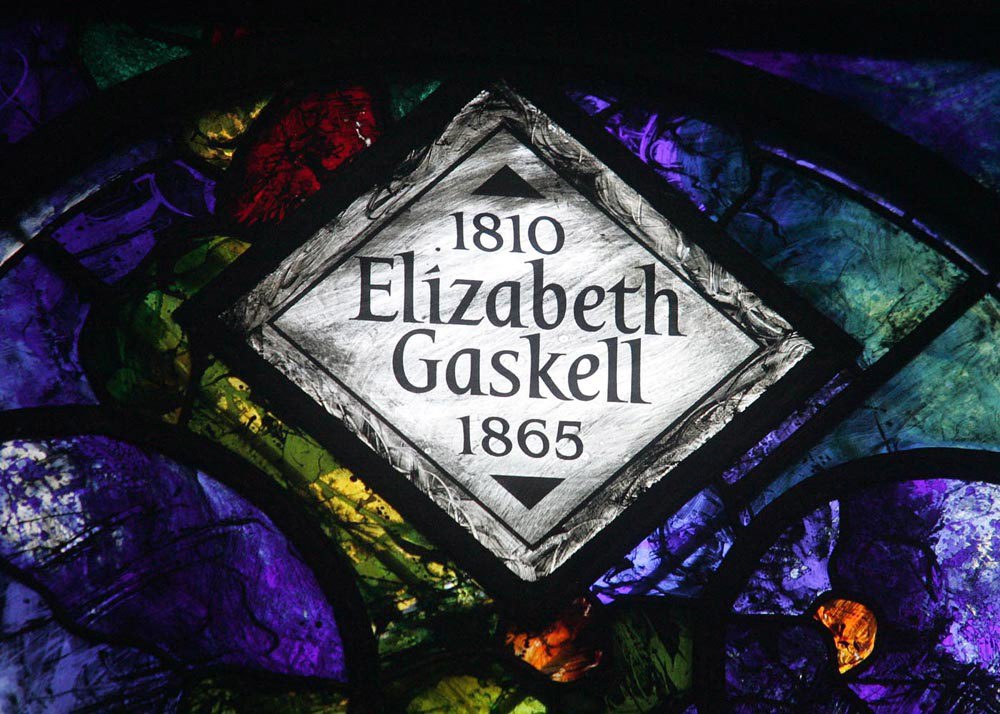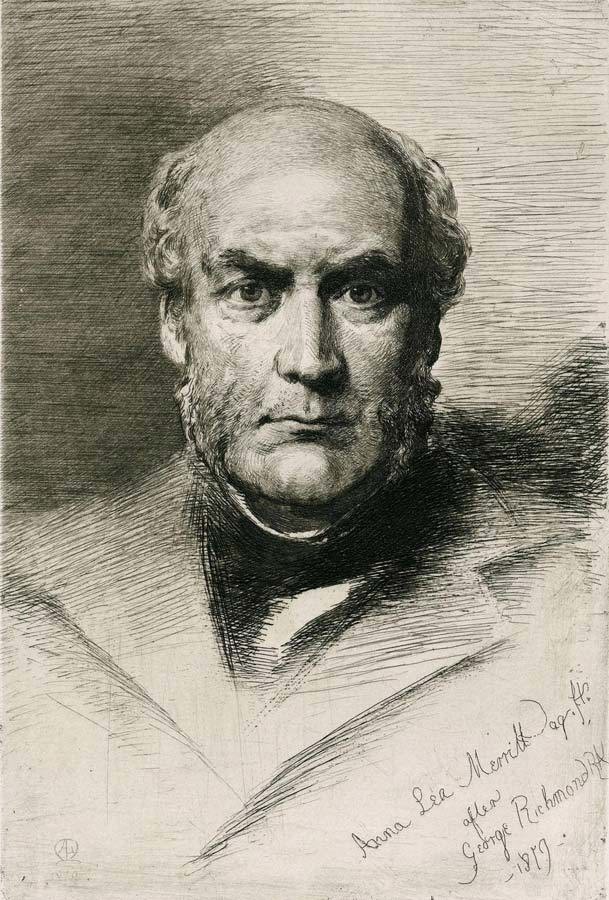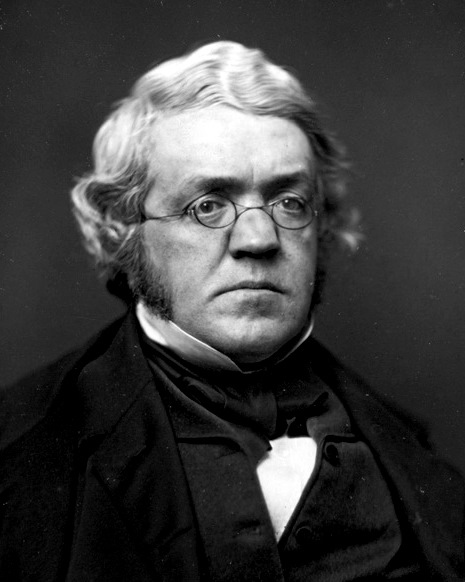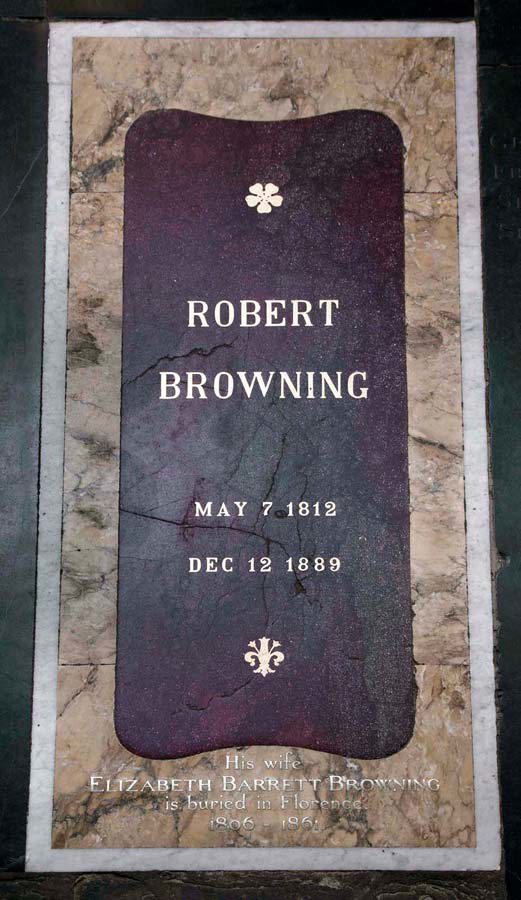Charles Robert Darwin, naturalist, is buried in the north aisle of the nave of Westminster Abbey, not far from Sir Isaac Newton.
His life
He was born in Shrewsbury on 12th February 1809, son of Robert Waring Darwin (1766-1848) and Susannah, daughter of the famous pottery magnate Josiah Wedgwood. His grandfather was Erasmus Darwin (1731-1802) who was a doctor, inventor (including a horizontal windmill), and poet, and also published his ideas on evolution in Zoonomia. Both Erasmus and Josiah campaigned for the abolition of slavery.
He studied with his brother Erasmus at Edinburgh University but disliked the idea of following in his father's footsteps as a doctor, or to go into the church as a clergyman. At Cambridge University he became very much interested in natural history and sailed on the ship HMS Beagle in 1831 to South America and the Galapagos islands. He often wrote letters from abroad to his sisters Caroline and Susan, and kept journals, which are preserved at Down House museum. His other sisters were Marianne and Emily Catherine.
On January 29th 1839 he married his cousin Emma Wedgwood (1808-1896), a passionate defender of animal rights, and, after leaving London, they went to live at Downe, a small village in Kent (the spelling of the village name had been changed from Down to Downe). They had many children, William, Anne Elizabeth, Mary Eleanor, Henrietta, George, Elizabeth, Francis, Leonard, Horace and Charles, but three died in infancy.
His famous work "The Origin of Species by natural selection" was published in 1859 and he continued working although his health was often poor. He died at Down House on 19th April 1882.
Burial
The Dean of Westminster, George Granville Bradley, was away in France when he received a telegram forwarded from the President of the Royal Society in London saying "…it would be acceptable to a very large number of our fellow-countrymen of all classes and opinions that our illustrious countryman, Mr Darwin, should be buried in Westminster Abbey". The Dean recalled "I did not hesitate as to my answer and telegraphed direct…that my assent would be cheerfully given".
The body was borne through the Abbey cloisters, followed by Darwin's five sons, and lay overnight in the small chapel of St Faith. The mourners who were to take part in the procession assembled in the Chapter House on the morning of 26th April and the coffin was escorted through the cloisters to the west entrance of the Abbey by the eminent mourners, where it was met by family members. The coffin was covered with a black velvet pall edged with white silk, with many wreaths of white flowers on top. The pall-bearers included Sir Joseph Hooker, Alfred Russel Wallace, James Russell Lowell (U.S. Ambassador), and William Spottiswoode (President of the Royal Society).
The burial service was held in the Lantern, conducted by Canon Prothero (in the absence of the Dean), with anthems sung by the choir. Frederick Bridge, the Abbey organist, specially composed the anthem "Happy is the man that findeth wisdom" for the occasion. He played Beethoven's Funeral March and march by Schubert in B minor while the chief mourners processed behind the coffin into the north aisle of the Nave where Darwin was buried next to the eminent scientist Sir John Herschel, and a few feet away from Newton. The anthem by Handel "His body is buried in peace, but his name liveth evermore" was sung at the grave.
The simple inscription on his gravestone, which is of pale Carrara marble, reads:
CHARLES ROBERT DARWIN BORN 12 FEBRUARY 1809. DIED 19 APRIL 1882.
Although an agnostic, Darwin was greatly respected by his contemporaries and the Bishop of Carlisle, Harvey Goodwin, in a memorial sermon preached in the Abbey on the Sunday following the funeral, said:
I think that the interment of the remains of Mr Darwin in Westminster Abbey is in accordance with the judgment of the wisest of his countrymen…It would have been unfortunate if anything had occurred to give weight and currency to the foolish notion which some have diligently propagated, but for which Mr Darwin was not responsible, that there is a necessary conflict between a knowledge of Nature and a belief in God…
A later, widely believed, rumour of a "deathbed conversion" to Christianity was denied by his daughter, who was actually present at his death.
Memorial
A bronze memorial roundel, with a life-sized relief bust, was erected in the north choir aisle, near to the grave, in 1888. The money was raised by a number of his friends who formed the Darwin Memorial Fund and many others from the scientific world contributed. The sculptor was Sir J.E. Boehm (who also made a statue of him for the British Museum). The inscription just says simply DARWIN.
Further reading
"The Survival of Charles Darwin" by Ronald Clark, 1985
Oxford Dictionary of National Biography, 2004
"The life and letters of Charles Darwin" edited by Francis Darwin
"The autobiography of Charles Darwin...with original omissions restored" edited by Nora Barlow
"In praise of Darwin" by J.D. Pleins, 2014
The Darwin Museum at Down House
The Bishop of Carlisle's ms. sermon is kept at the Darwin Museum
On the Origin of Species by Charles Darwin
The Darwin Memorial Fund papers are at Cambridge University Library

Elliott & Fry [Public domain], via Wikimedia Commons

This image can be purchased from Westminster Abbey Library
Image © 2026 Dean and Chapter of Westminster

This image can be purchased from Westminster Abbey Library
Image © 2026 Dean and Chapter of Westminster









